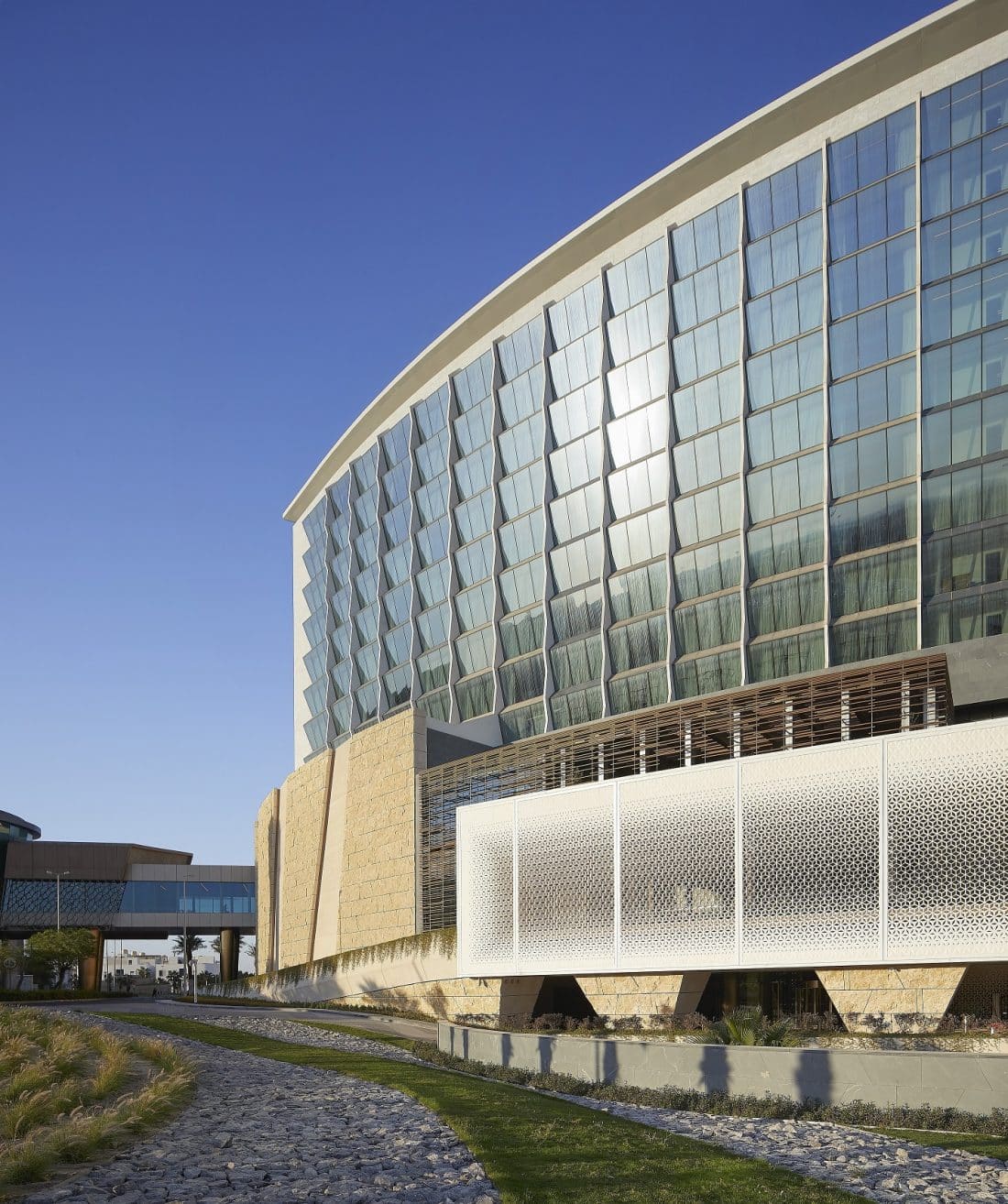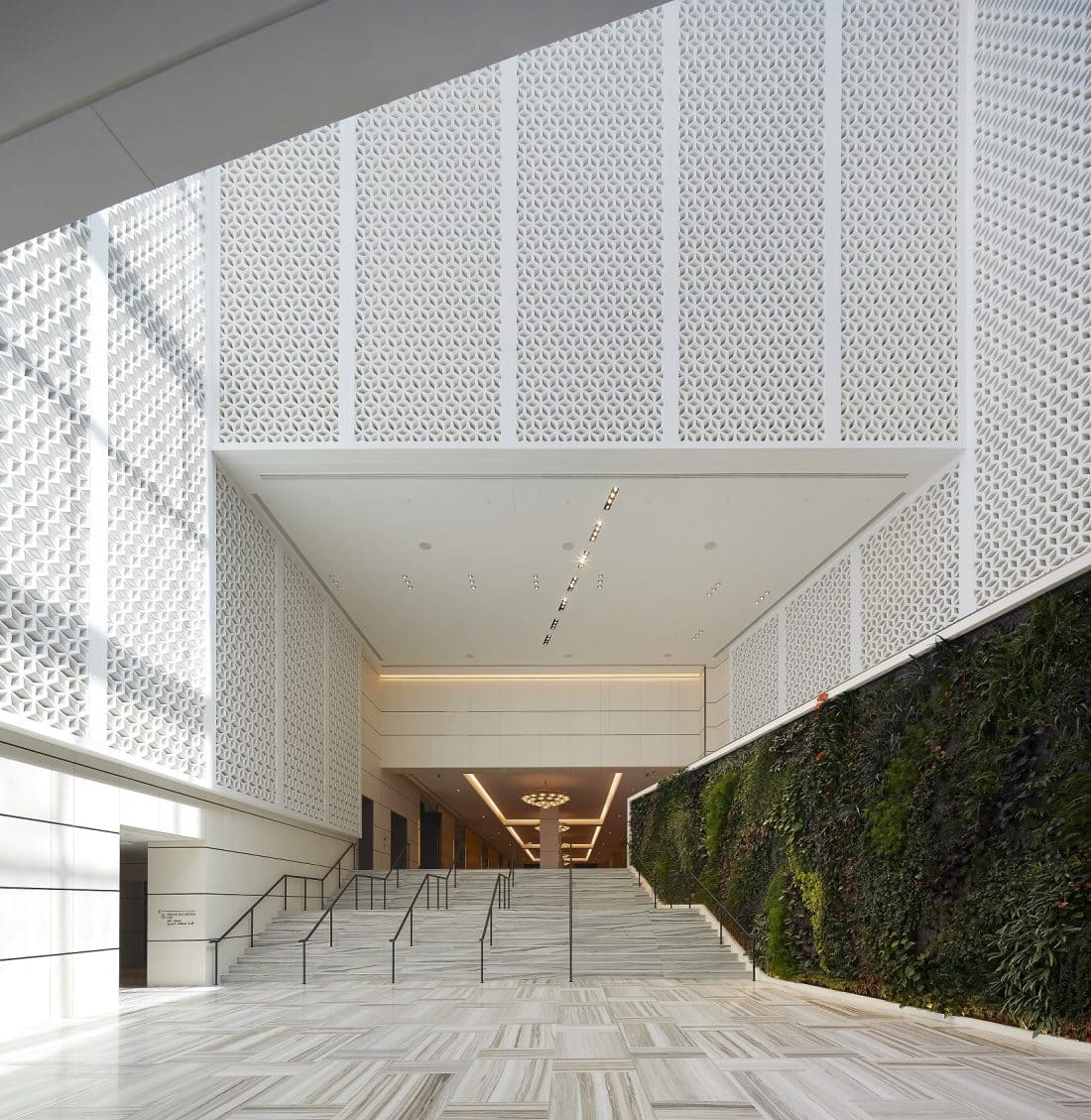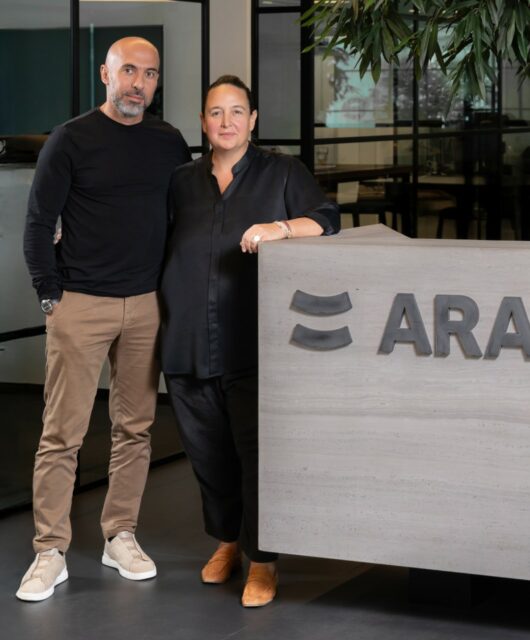What distinguishes Grand Hyatt Kuwait by CallisonRTKL’s architecture? Let’s find out

Distinctive in its design and grand aesthetic, the hotel seeks to position itself as an urban sanctuary within a larger destination that has a unique story to tell. The 302-key luxury urban escape, with its impressive and majestic architectural design aims to set itself apart with signature guest experiences which forms an integral part of the country’s most immersive luxury social and lifestyle complex.
The hotel’s design was conceptualised to seamlessly integrate into the context of the surroundings, complementing the established architectural lines, visually and functionally, while still making a distinct architectural statement all on its own. As the tallest building in the area, the nine guestroom floors offers truly unobstructed views from every angle.
One of the property’s most distinguishing design features is its curved design, conceived and executed in lieu of a traditional rectangular outline to allow for a more natural and harmonising integration into the existing architectural landscape. The hotel’s exterior design complements the curvilinear design aesthetic of the 360 Mall extension with a series of layers that splay out with unique characteristics. These multiple design features are focused on achieving an environmentally responsive building – inspired by and adapted for the local climate and culture.

Large dynamic screens inspired by the mashrabiya were designed with a highly detailed gradient pattern at the podium, maintaining high visibility at eye level while increasing the amount of shade and privacy in various focal areas. From the outside, the mashrabiya presents a beautiful and enigmatic front. Overall, the ancient mashrabiya successfully merges cultural values of heritage, traditional geometric visuals and ancient technical aspects, into something beautiful that has truly stood the test of time.







